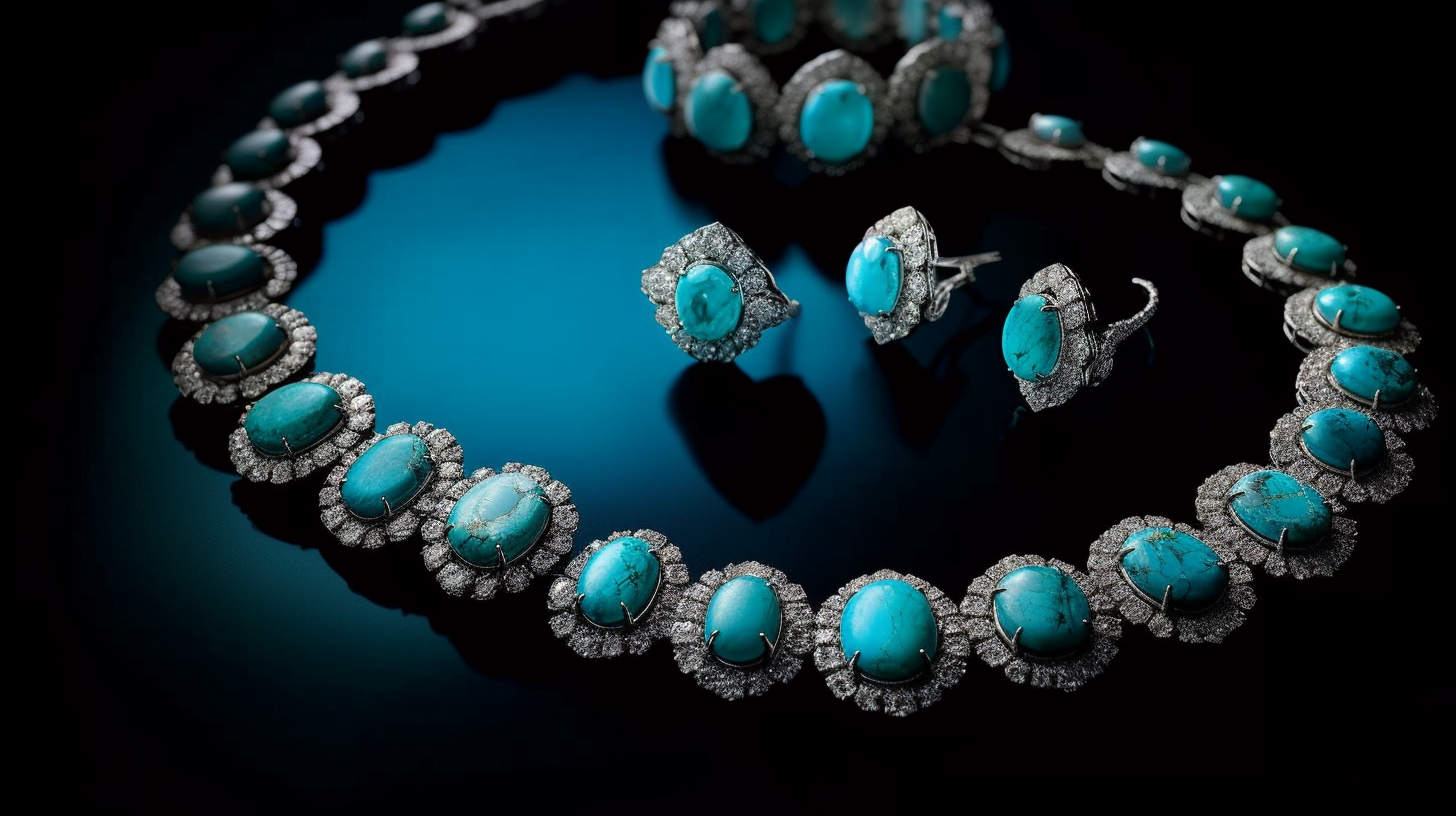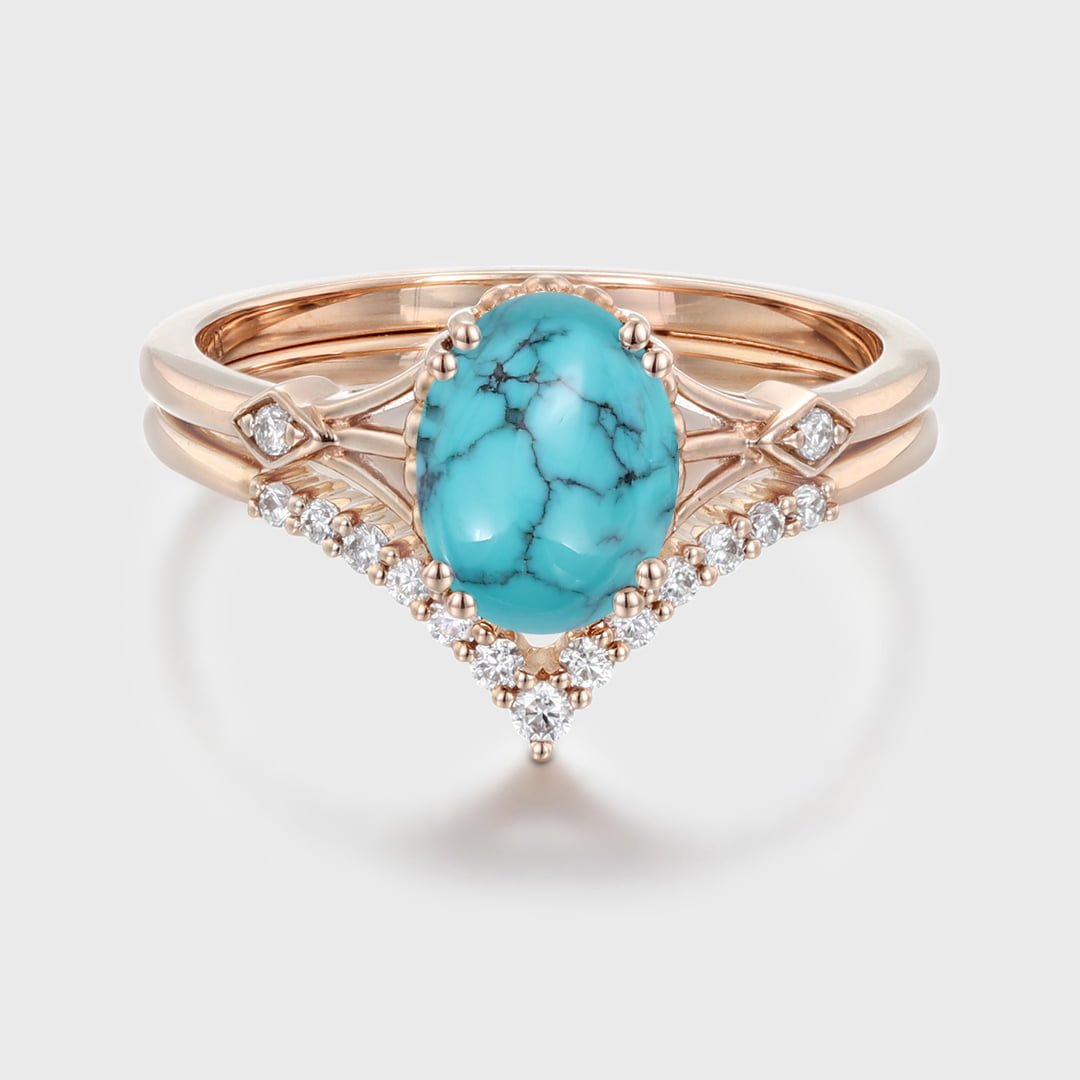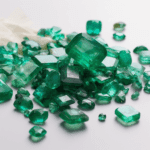Introduction
Turquoise, with its enchanting blue-green hues, has captivated humanity for centuries. This unique gemstone has been cherished for its mesmerizing beauty and revered for its cultural and spiritual significance. In this comprehensive guide, we will explore the world of turquoise gemstones, uncover their history, delve into their geological origins, discuss their cultural significance, and provide valuable insights on how to care for and appreciate these stunning gems.
The History and Significance of Turquoise
Ancient Origins: Turquoise has a rich history that dates back thousands of years. It was highly prized by ancient civilizations such as the Egyptians, Persians, and Native Americans for its vivid color and believed protective properties.
Cultural Symbolism: Across various cultures, turquoise is seen as a symbol of protection, wisdom, and good fortune. It has been used in jewelry, art, and religious artifacts for its talismanic qualities.
Spiritual Connections: In many spiritual practices, turquoise is associated with healing and communication. It is believed to promote balance, calmness, and self-expression.

The Geology of Turquoise
Formation Process: Turquoise forms in arid regions where copper-rich water interacts with aluminum and phosphorus minerals. This complex process can take millions of years, resulting in unique turquoise deposits around the world.
Color Variations: Turquoise’s color can vary from sky blue to greenish-blue, influenced by the presence of trace elements such as copper and iron. The most prized turquoise often exhibits a pure blue hue.
Turquoise Varieties and Sources
Persian Turquoise: Known for its deep, robin’s egg blue color, Persian turquoise has been historically revered for its exceptional quality. Mines in Iran produce some of the world’s finest specimens.
Sleeping Beauty Turquoise: Mined in Arizona, USA, Sleeping Beauty turquoise is renowned for its vibrant blue color and minimal matrix. Its clean, robin’s egg blue appearance makes it highly sought after.
Chinese Turquoise: China is a significant source of turquoise, offering a wide range of colors and qualities. Hubei Province, in particular, produces turquoise known for its striking spiderweb patterns.
Other Sources: Turquoise is also found in countries like Mexico, Egypt, and Tibet, each with its unique characteristics and appeal.

Turquoise in Jewelry and Fashion
Turquoise Jewelry: Turquoise’s vivid colors and cultural significance make it a popular choice for jewelry. It is often used in rings, necklaces, bracelets, and earrings, both in traditional and contemporary designs.
Fashion Trends: Turquoise has made its mark in the fashion world, with designers incorporating it into clothing, accessories, and even makeup, giving a refreshing and vibrant touch to various styles.
Turquoise Rings: A turquoise ring is a piece of jewelry featuring a turquoise gemstone as its centerpiece. Turquoise is a blue-green mineral prized for its striking color and historical significance. It’s often used in jewelry-making to create vibrant and eye-catching rings.
Spiritual Meaning of Turquoise
Turquoise is a gemstone that holds various spiritual and metaphysical meanings across different cultures and belief systems. Here are some of the common spiritual meanings and associations attributed to turquoise:
Protection: In many cultures, turquoise is considered a protective stone. It is believed to guard against negative energies, harmful influences, and psychic attacks. It’s often worn as an amulet or talisman for this purpose.
Healing and Health: Turquoise is associated with physical and emotional healing. It’s believed to have properties that can promote overall well-being, balance, and vitality. Some people use it as a healing stone for ailments related to the throat, respiratory system, and the immune system.
Communication and Expression: Turquoise is often linked to clear communication and self-expression. It’s said to help individuals speak their truth, articulate their thoughts, and express themselves more effectively. This makes it a popular stone for those in roles requiring effective communication, such as teachers and public speakers.
Emotional Balance: Turquoise is thought to promote emotional balance and inner calm. It’s believed to alleviate stress, anxiety, and depression by encouraging a sense of tranquility and inner peace.
Spiritual Growth: Turquoise is associated with spiritual growth and awareness. It’s believed to enhance intuition, psychic abilities, and the connection to one’s inner self. Some use it during meditation to deepen their spiritual practice.
Creativity and Inspiration: Turquoise is sometimes associated with creativity and inspiration. It’s believed to stimulate the imagination and help individuals overcome creative blocks.
Symbol of Friendship: In some Native American cultures, turquoise is considered a symbol of friendship and goodwill. It’s often exchanged between friends as a sign of trust and lasting friendship.
Chakra Alignment: Turquoise is associated with the throat chakra, which is related to communication, self-expression, and speaking one’s truth. It’s believed to help balance and align this energy center.
Protection for Travelers: Historically, turquoise was often carried by travelers as a protective amulet. It was believed to safeguard individuals during their journeys, whether physical or spiritual.
Caring for Turquoise
Gentle Cleaning: To maintain its luster, clean turquoise with a soft, damp cloth. Avoid using harsh chemicals or ultrasonic cleaners that can damage the stone.
Protection: Turquoise is relatively soft and porous, making it susceptible to scratches and damage from exposure to moisture and chemicals. Store it separately from other jewelry items to prevent contact and damage.
Conclusion
Turquoise gemstones are not just beautiful adornments but also symbols of culture, history, and spirituality. Their vibrant colors and rich symbolism have made them a cherished part of human civilization for centuries. Whether you’re considering turquoise jewelry for its aesthetics or its spiritual significance, understanding its history, geology, and care requirements can enhance your appreciation for this captivating gemstone. So, dive into the world of turquoise and let its timeless allure enchant you.





